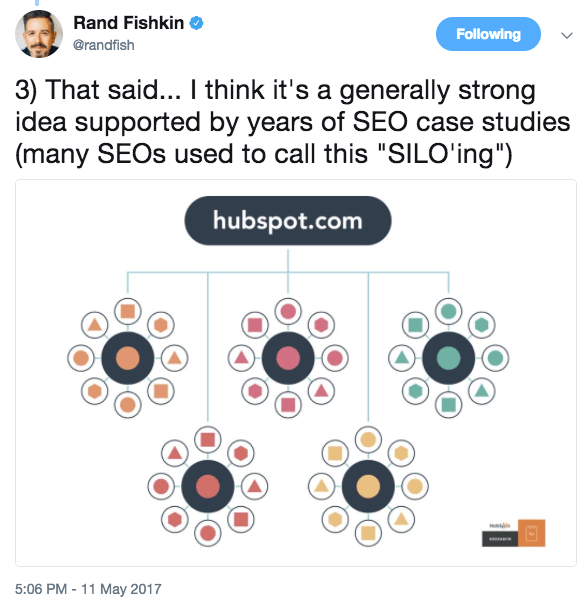Website Redesigns that Better Serve Modern Marketers

Investing in a website redesign? Systematic shifts in search and design may make you think twice about where you spend your money.
Companies investing in website design projects need to understand the changing nature of search and website design before investing in a site that may need major changes soon after launch. By tracking search filters used on our company's agency directory, we found users are predominantly hiring marketing agencies to help with Web design projects and content marketing. While it's natural to outsource those tasks, it is now more vital than ever that someone interested in hiring an agency understands the major shifts happening in those fields. Search trends have shown that content creators need to adapt to Google's Rankbrain update and searcher intent shifts. Any website design investment must take these changes into account.
Website design and content creation go hand in hand when it comes to creating an exceptional site that converts visitors into customers. A beautifully designed site that lacks any substance will fail to keep a visitor's attention. Even the best content will fail to find the right audience if the user experience makes it too difficult to find or consume. Our own research shows that when looking to hire an agency, business owners search for website design and content creation more than any other service. Website design searches made up 20 percent of all service-related searches on our agency directory in August, while 11 percent of searches went to find content creators. Our 2017 research also indicates that growing SEO, blog creation and content amplification were the top three priorities for the upcoming year among marketers.
Given the importance of these services for a marketer - not to mention the cost in time and money associated with an investment into these areas - it is imperative to approach an agency or provider with a current grasp on these subjects. In the world of search, there is a movement happening where marketers are shifting from focusing on ranking for keywords and toward ranking for topics. In this model, a marketing team develops a page - called pillar content- that is built to rank for a broad topic and they use supporting blog content to link to that piece of pillar content.
Help Scout provides a great example of this in action. They created a page that acts as a go-to resource for any kind of information related to the topic of customer acquisition. Customer acquisition is the topic. Help Scout uses their blog posts to expand the number of keywords related to customer acquisition they want to target, while always ensuring they link back to the pillar customer acquisition page.
Our research department found that structuring content based on a pillar structure led to higher average ranking on search engine results pages and more impressions. Focusing on topics and building your site based on a pillar content structure means that marketers need to re-think their approach to content production. Focusing on long-tail keywords and trying to rank for a broad spectrum of keywords might no longer work for your company. If a content provider proposes that kind of model for your company, you should press to make sure a pillar content model fits better with your search goals. While the idea of creating pillar content is not a new one it's something that a marketer should keep top of mind when investing in site design or content creation.

Much like how ranking for topics is changing search marketing, growth-driven design (GDD) has changed how website design firms build new websites. The concept of GDD was created to better serve modern marketers obsessed with data and making educated choices. Traditional website design firms have a trusted process for approaching a website redesign that includes gathering research, creating mock-ups and launching a site over the course of an extended amount of time. While the quality of work for these kinds of projects can be exceptional, this model has a core flaw with the length of time it takes to launch a new site. Launching a site may take anywhere from a few months to two years to complete! Marketing messaging can shift in a week and launching a site based on research conducted a year previously might leave out valuable current user information.

The old design model also included a big launch of the new site that created buzz and a public relations opportunity. With that big launch came the end of the work. It is true the design firms might help with ongoing maintenance, but a majority of the project ends with the launch. This way of launching a new site leaves little time for testing to see what about the new site works and what does not work.
Growth-driven design addresses these flaws by focusing on launching iterations of a final site and testing along the way. Rather than launching a big bloated site all at once, GDD firms will create a test or launch site along with a comprehensive testing plan to ensure the new site resonates and tests well with its users. GDD is a different way of approaching website design that focuses on testing and gradually creating a working site.
Even with these new approaches, it is worth pausing before you completely overhaul your content creation efforts or ditch your almost complete website design launch. Every company should create a unique approach to content creation and website design that complements their goals. Building a foundational knowledge on these topics will help ensure you make a wise investment in the future.
 About the Author
About the AuthorTim Dearlove runs the global growth strategy for the HubSpot agency directory. HubSpot is the world's leading inbound marketing and sales platform. Find him on twitter @tdearlove.
Subscribe to Our Newsletter!
Latest in Web Design









